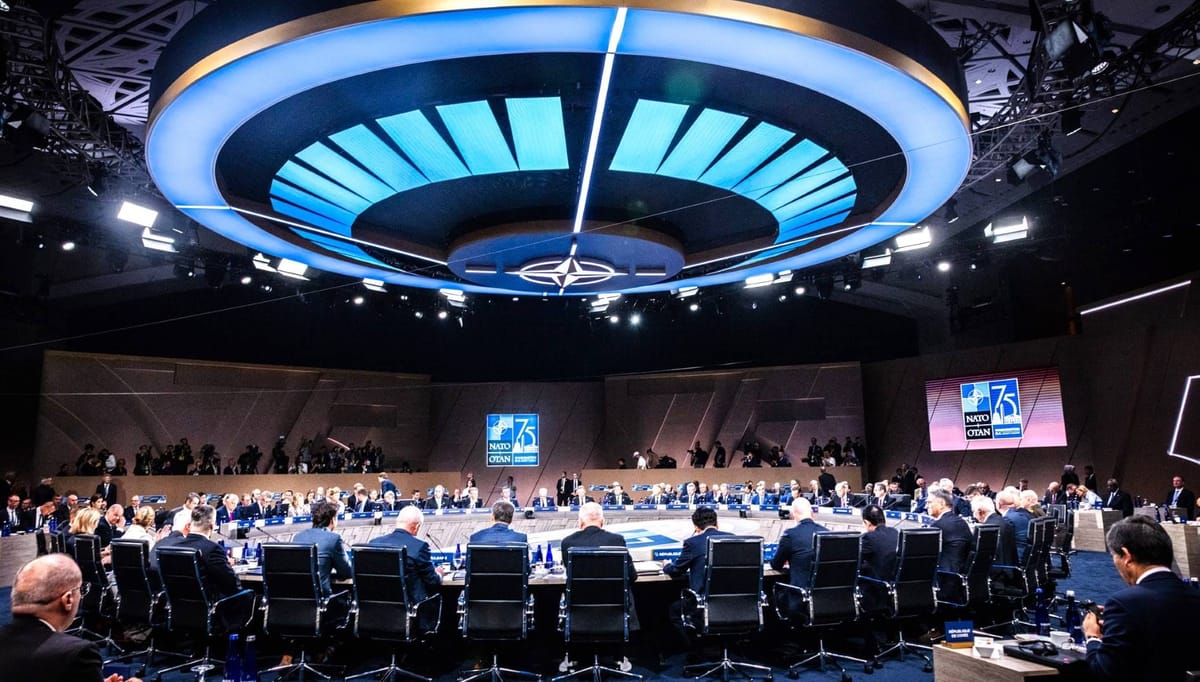
NATO members pledged to accelerate the “integration of new technologies and innovation” at their summit in Washington this week.
The cyber, space and subsea domains are priorities – NATO is “developing a policy to augment the security of NATO’s networks” they added.
The strategic insight came in a 5300-word communiqué published July 10 – as the defence alliance flagged “the biggest reinforcement of our collective defence in a generation” in the wake of Russia’s invasion of Ukraine.
Resilient networks; improved interoperability
Both member state technology interoperability and, more broadly, alliance communication infrastructure continue to be priorities for NATO.
Reports suggest that NATO is working on ways to switch communications to satellite in the event of subsea internet cables being sabotaged amid a challenging geopolitical landscape. (“We cannot discount the possibility of an attack against Allies’ sovereignty and territorial integrity” NATO noted.)
See also: US agencies tell users to deploy 'independent encryption' for all satellite comms: That's easier said than done.
Amongst other modernisation efforts NATO said that it was:
“Accelerating the integration of space into our planning, exercises, and multi-domain operations, in particular by strengthening the capacity of NATO’s Space Operations Centre. [Among other investments here, NATO is spending €1 billion by 2034 on procuring satellite communications capabilities.]
“Establishing the [newly agreed this week] NATO Integrated Cyber Defence Centre to enhance network protection, situational awareness… and developing a policy to augment the security of NATO’s networks.
“Strengthening the protection of critical undersea infrastructure (CUI), and enhancing our ability to deter, detect and respond to threats [...through] NATO’s Centre for Security of CUI" [established in May.]
Editor's note: You can see some of the software and systems that NATO is publicly procuring via NATO's Communications and Information Agency (NCI) here – registration will be required on its shiny new eProcurement tool, Neo.

In terms of the space-focus, 18 months earlier NATO allies agreed to develop the Alliance Persistent Surveillance from Space (APSS) initiative.
APSS will “enhance cooperation on space-based surveillance in support of… NATO’s overarching Space Policy [and] establish a large-scale, virtual constellation of national and commercial surveillance satellites, called ‘Aquila’” with the aim of furnishing the alliance with “faster and better intelligence… more space-based data into NATO’s intelligence ecosystem and leverage technological breakthroughs from the commercial sector.”
See also: UK defence facing a “step-change” in how adversaries use digital and data: “Attitudes, culture” must change
NATO's Washington communiqué highlights “a plan to improve technology adoption”, but it also continues to work through a legacy of more prosaic interoperability challenges across its member states’ forces.
Whilst NATO member state’s soldiers may share standardised analogue hand signals in the field and an agreed-on phonetic alphabet (it’s Golf, not Grigory; Tango over Tatiana), the alliance itself has freely admitted in the past that “there are vast technological disparities between NATO forces.”

Whilst those may always exist, greater interoperability continues to be an aspiration and this week’s summit came three weeks after NATO ran its largest ever Coalition Warrior Interoperability exercise (CWIX) in Poland.
The exercise was backed by over 100 staff from the alliance’s Communications and Information Agency (NCIA) who provided engineering expertise “from networking to software engineering.”
CWIX is designed to improve interoperability within communication and information systems (CIS) – with a focus on enabling national forces to “communicate effectively as one multi domain-enabled fighting force."
Sign up for The Stack
Interviews, Insight, Intelligence for Digital Leaders
No spam. Unsubscribe anytime.
At earlier CWIX events NATO staff have flagged their ongoing work on the Federated Mission Networking framework; an approach that "allows NATO, national and multinational units to work together on one comprehensive network, while retaining ownership of their individual networks."
Other technology-centric projects across the alliance include work on [pdf] cloud-native interoperable simulation systems dubbed "Modeling and Simulation-as-a-Service" (MSaaS) for "stand-alone use as well as integration of multiple simulated and real systems into a unified cloud-based simulation environment..." and ongoing work on generative AI.
On the latter, NATO admitted in an updated AI strategy published this week that it "needs to strengthen its understanding of the landscape and maturity of services, skilled testers, public and private AI safety bodies and accreditation and certification functions" as it looks to "accelerate and mainstream AI adoption in capability development and delivery"– a key priority being (you guessed it) "enhancing interoperability."